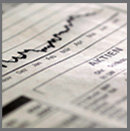
Understanding the causes of volatility may lessen its effects, according to one buy-side trader.
The institutional traders’ world today is rife with issues that appear to have contributed to the last few years’ unprecedented market volatility, sometimes thwarting even the most carefully thought-out and conservative trading strategies. But so far little progress has been made in identifying which issues are playing the biggest role in fueling the volatility, and so how it can be brought under control.
 “For many types of trading, volatility is welcomed. But for the buy-side trader who is looking to invest client monies, volatility can be problematic, and it’s unclear now what’s prompting it,” said Richard Cancelmo, who heads the trading team at Bridgeway Capital Management, a quantitative investment management firm headquartered in Houston.
“For many types of trading, volatility is welcomed. But for the buy-side trader who is looking to invest client monies, volatility can be problematic, and it’s unclear now what’s prompting it,” said Richard Cancelmo, who heads the trading team at Bridgeway Capital Management, a quantitative investment management firm headquartered in Houston.
Cancelmo said he assumes the volatility stems from a combination of the struggling global financial environment as well as market structure issues and high-frequency trading. “Those things have all grouped together to give us a market that can be very difficult to trade in,” he said.
Upsets in the global financial environment—most recently the threat of sovereign bond defaults in Europe—must run their course. On the market structure front, Cancelmo pointed to the maker-taker fee model offered by most of the exchanges and other execution destinations as particularly troublesome. The fee models may change from venue to venue, but ultimately they’re all charging for one type of order and paying for another.
“This system of incentives now seems to have deep roots because it’s become a big revenue source for Wall Street, making it hard to change,” Cancelmo said.
The maker/taker fee structure drives the profits of a hefty percentage of high-frequency trading firms, which use revved up trading engines to jump ahead of market orders to capture liquidity-provider rebates. Their superfast trading strategies combined with their high ratio of cancelled-to-filled orders would appear to be one of the factors behind the now frequent single-digit-percentage jumps by the stock market indices.
Cancelmo said he’s not opposed to high-frequency trading, because it is simply a form of arbitrage, and many of the trading strategies serve to minimize security price discrepancies and tighten spreads. Plus, removing them from the market could reduce liquidity.
Nevertheless, while regulators are mulling approaches to temper their frenetic trading, such as a transaction tax, the 2010 flash crash and similar events have highlighted that high-frequency trading firms’ liquidity comes with a price: It’s opportunistic and can quickly vanish, potentially exaggerating market moves.
“They’re not performing the true function of a market maker,” Cancelmo said.





